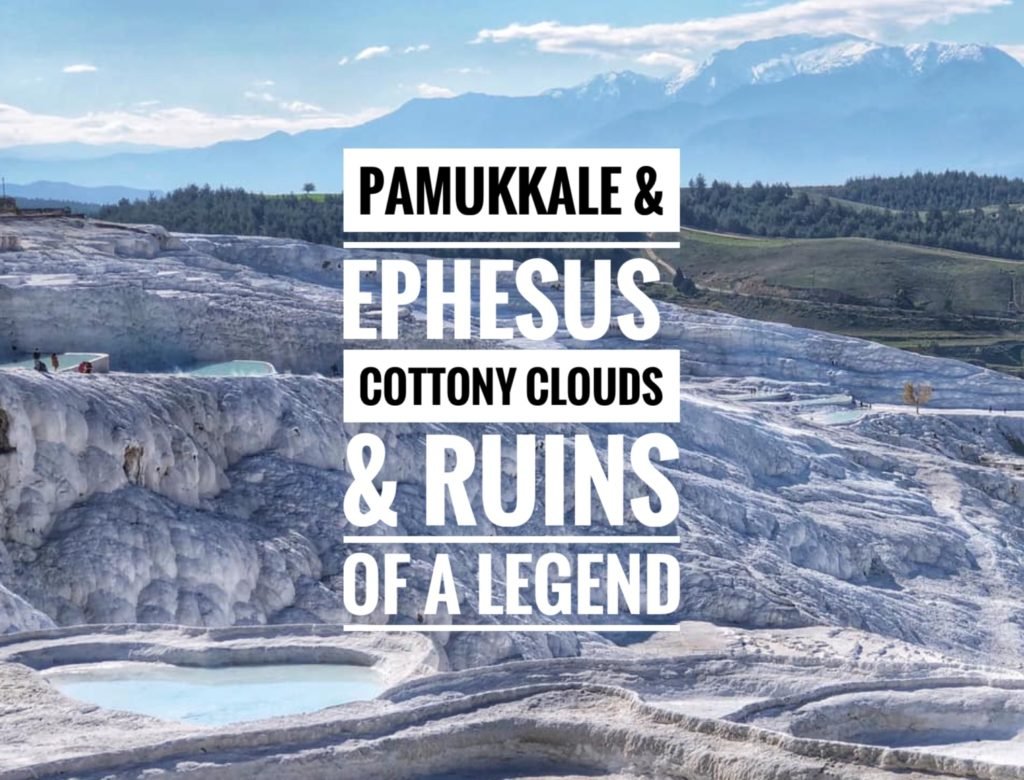
We had three more days in the land of Türkiye, as the Turks prefer their country name pronounced, just enough time to squeeze in a couple more jaw-dropping wonders. Türkiye was about to add to its already significant wow factor for us at Pamukkale & Ephesus.
Paumukkale, aka the Cotton Castle, is not made of salt, nor freshly fallen snow. The bizarre, otherworldly,and blindingly white formations play tricks on you as your eyes and mind try to work out what has happened here. In fact, it is a naturally occurring phenomenon where hot spring water containing high levels of dissolved calcium carbonate have flowed in this spot for thousands of years, depositing layer after countless layer of calcite over the rocks as it flowed downhill. This dazzling white calcite coating over the landscape creates a bizarre wonderland, which attracts people from all over the world.

To get into Pamukkale, you must pay a steep 50 Turkish lira ($10) per person at the entrance gate and then almost immediately, you must also lose your shoes. (A little ironic in a country where it’s inappropriate to show your feet in public.) It’s odd to set foot on this surface. Your brain tells you this smooth wet glistening snowy-looking blanket should be treacherously slippery and cold. And it is cold, but only because we arrived early in the day before the sun had warmed it. But it’s also not slippery, in fact it’s like walking on course sandpaper that seems to take layers of skin off your feet with every step. Weird.
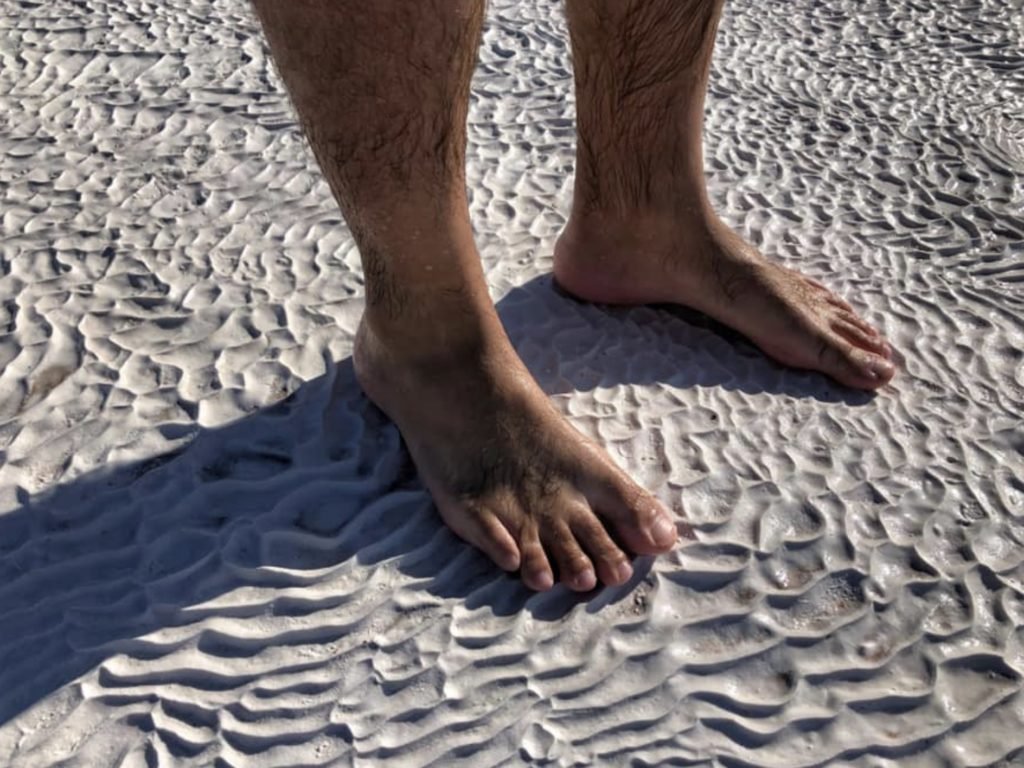
A close up of the surface (and Greg’s freshly exfoliated feet.)

It doesn’t take long however, seeing the aquamarine travertine terraced pools takes your mind off your feet. As you climb, each pool gets more and more

Striking… cascading water flows downslope and creates a shimmering string of jewels as you look down the alabaster hillside.
The blissful hot spring water flows down a channel alongside the pools. By the time we saw these, our feet had become a bit pins & needly, so we gladly hopped in and wandered our way up the path via the hot water marvel. Notice the hot air balloon in the distance…As you can imagine, Pamukkale is a very popular spot for this, but our meager $50/day budget meant we’d have to simply enjoy the view looking up at them. Paragliding is also popular here.
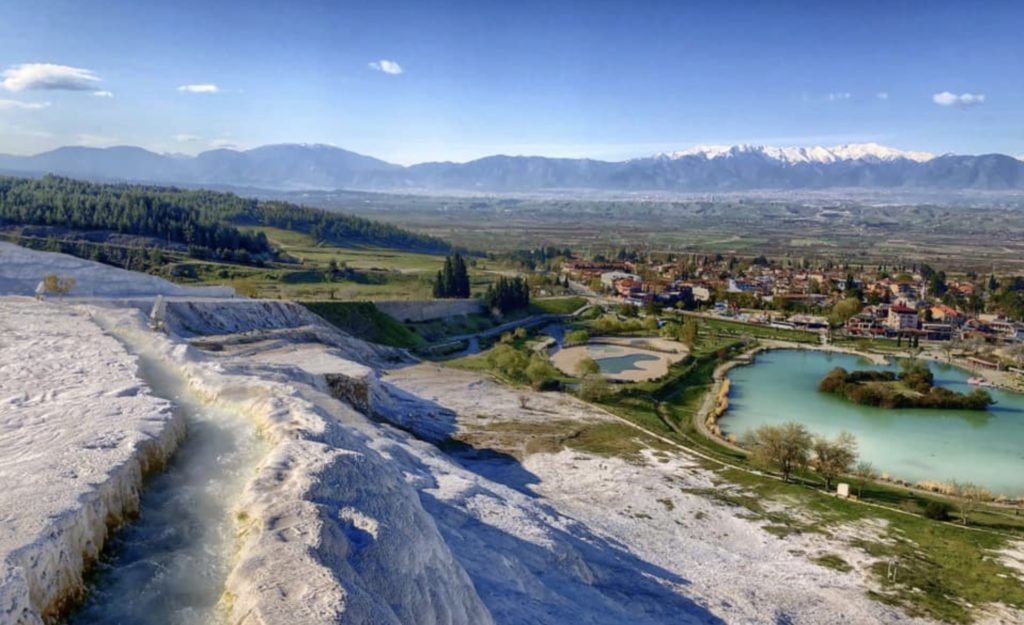
Looking over the mountains.
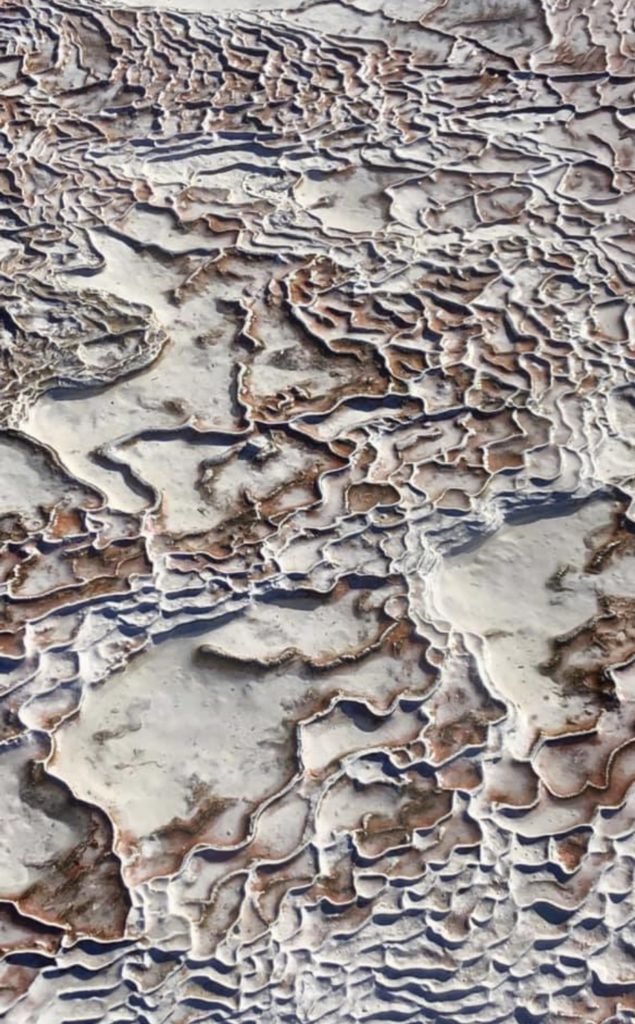
The mottled earth comes in so many forms…
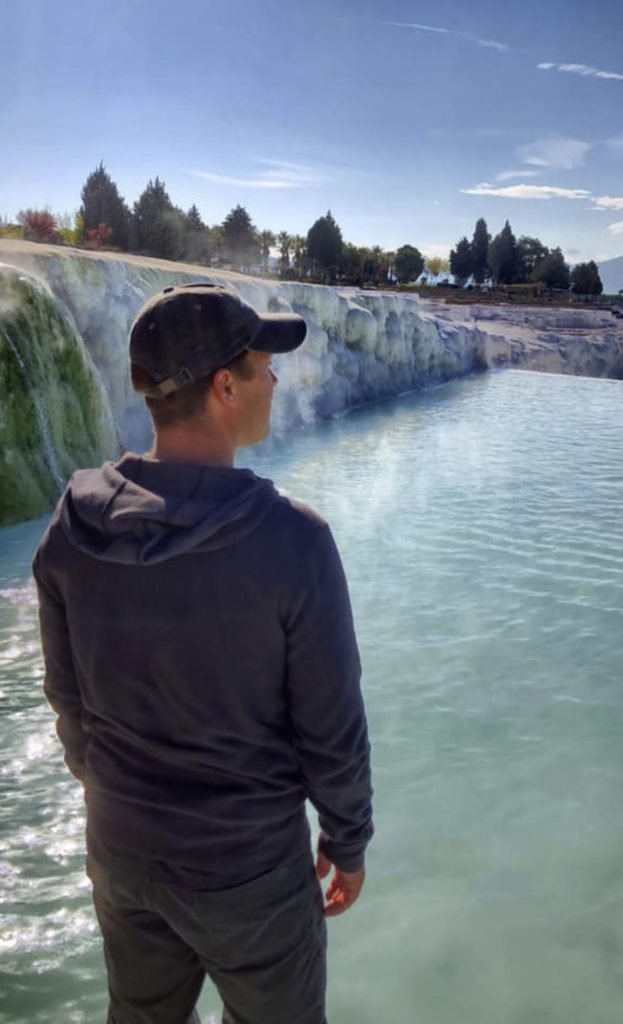
The rare crowdless moments before we reach the top of the hill…
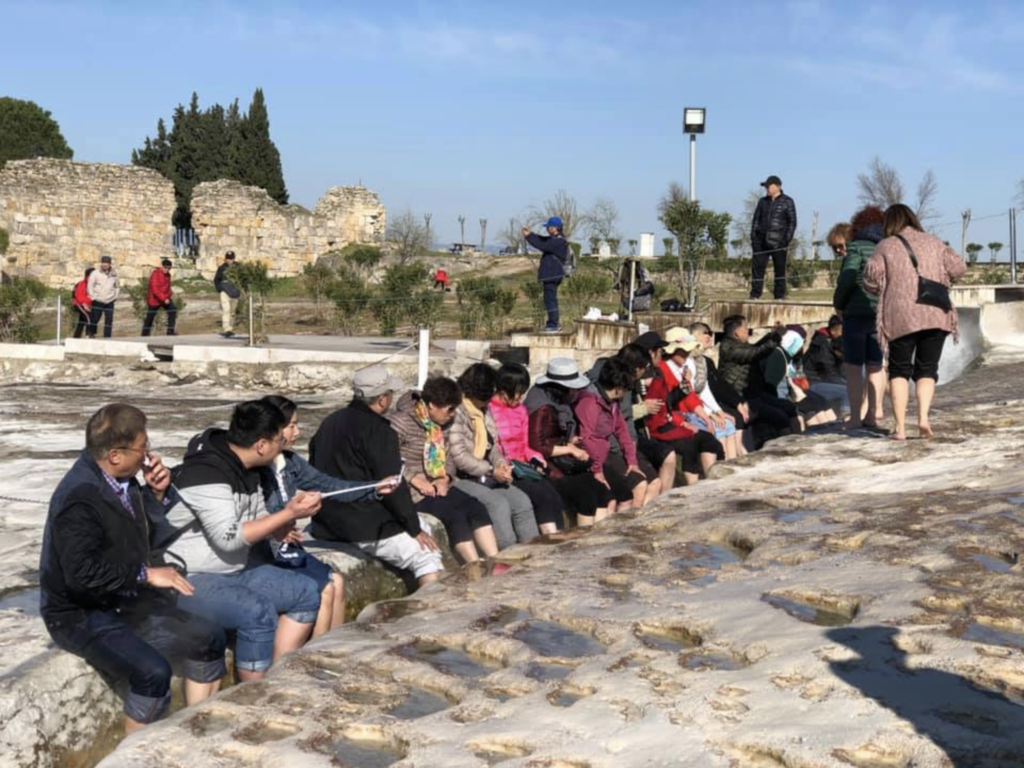
And…welcome to Pamukkale…China?! Literally, 95% of the tourists who visit are from SE Asia. So many Asian tourists frequent Pamukkale that most restaurants now feature Chinese dishes and offer menus in Chinese!
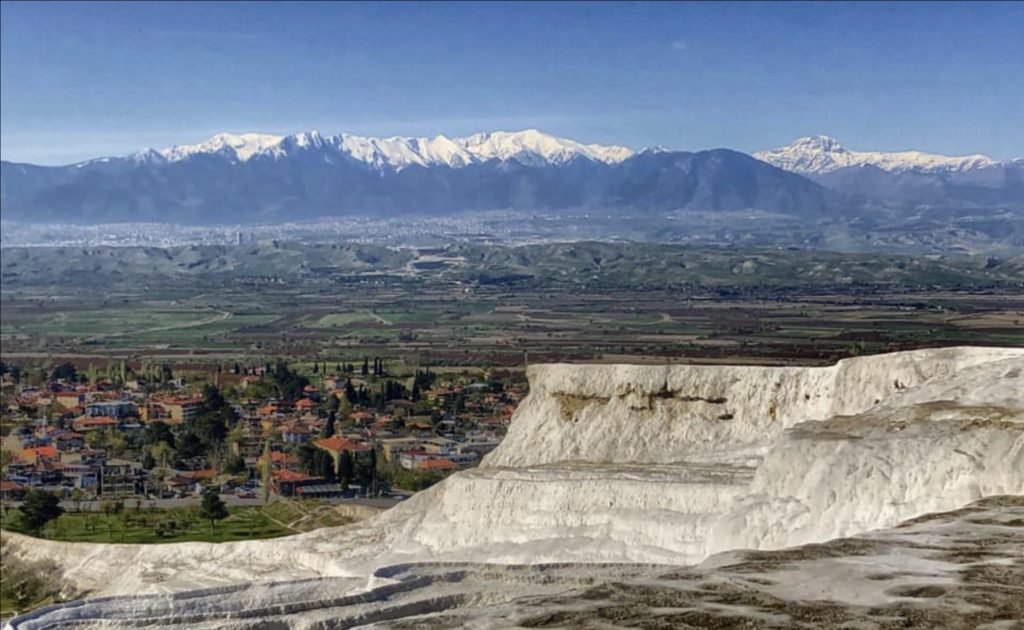
We were definitely disappointed to get to the top and find that one idyllic “Instagram” shot , the one shot that is featured on all images of Pamukkale, was not possible today because the water had been frustratingly diverted elsewhere… so the pools sat empty.
As close as we could get…
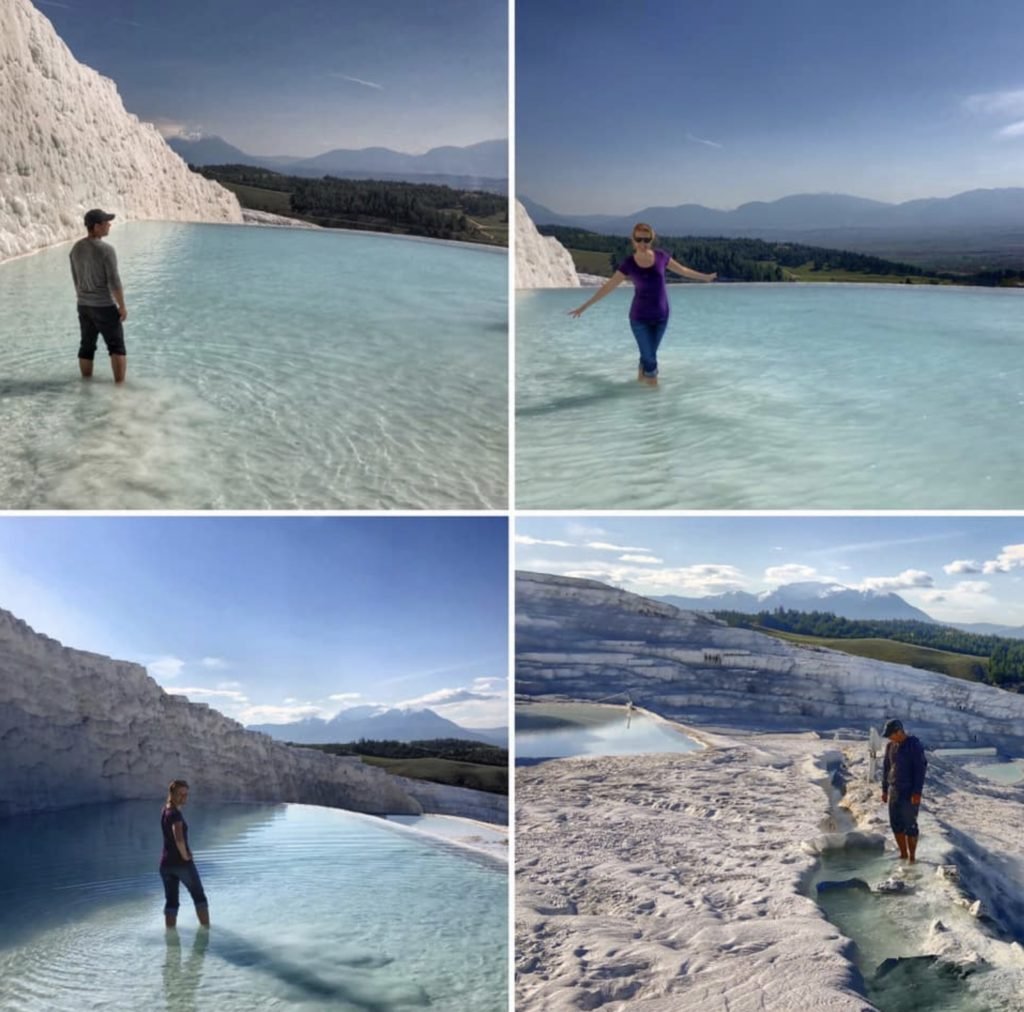
Playing in the pools!
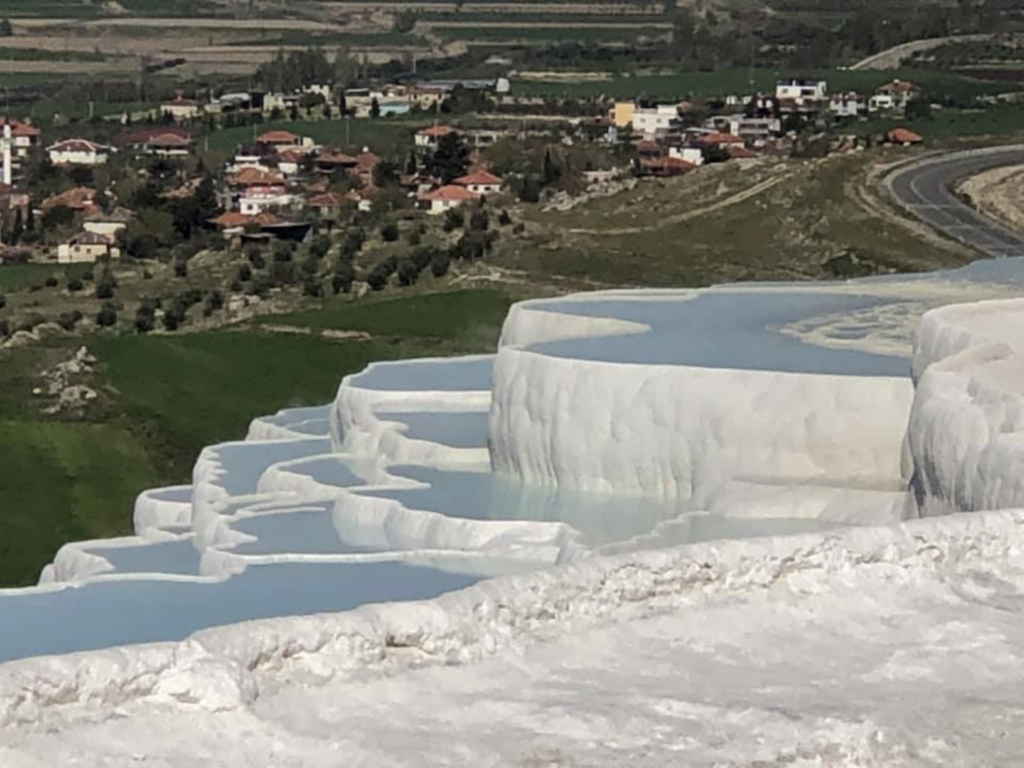
Another gorgeous area, but not the iconic shot.
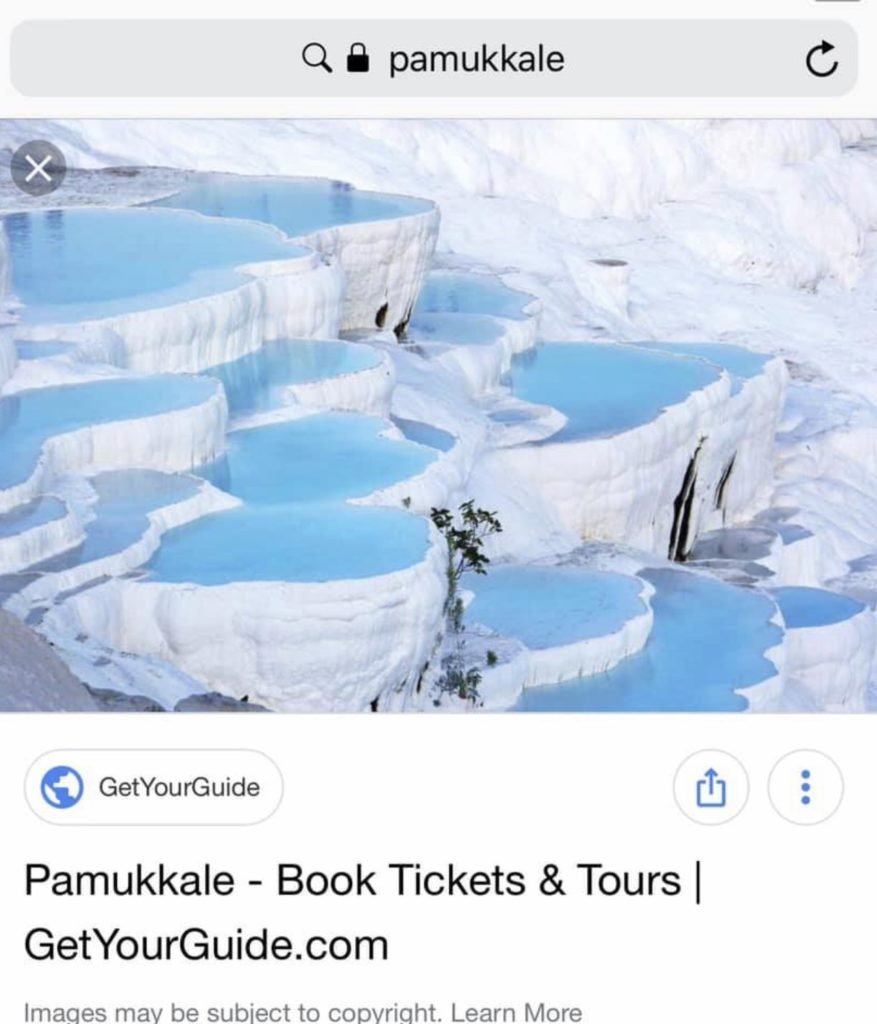
For the record, this is the shot we’re talking about. The one that drives so many (including us) to visit Pamukkale in the first place…
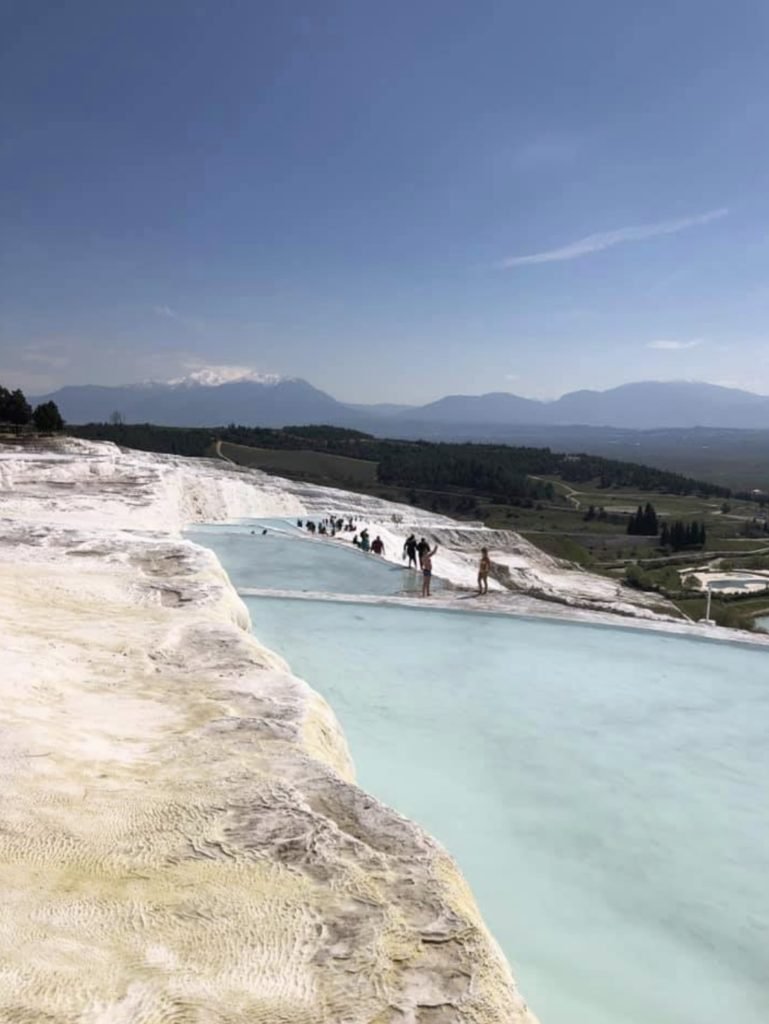
From the top looking down

Mandy made it!
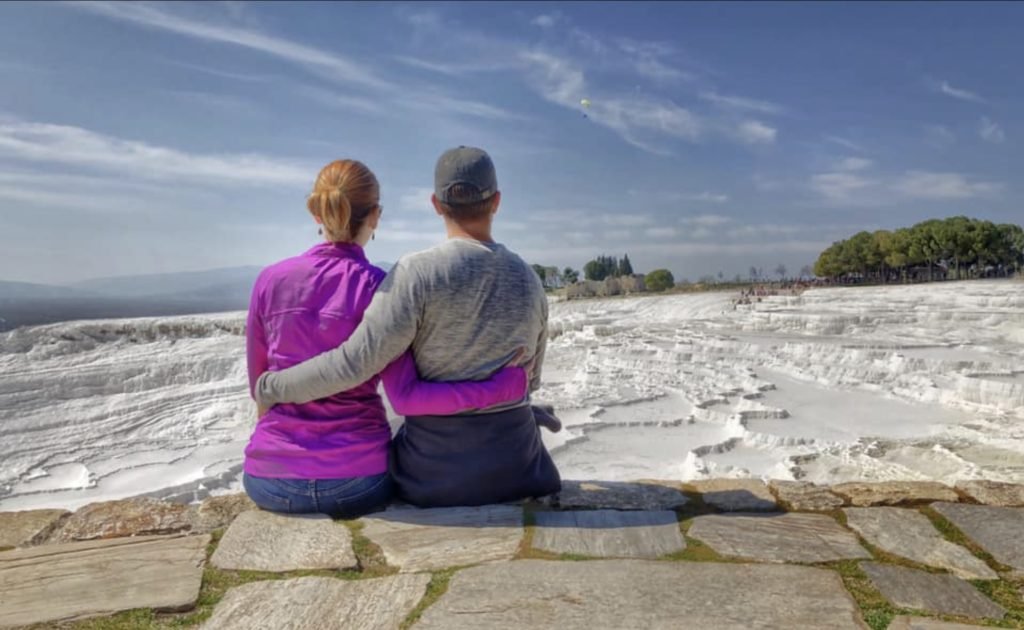
Err…sorry…<insert> cute couple picture
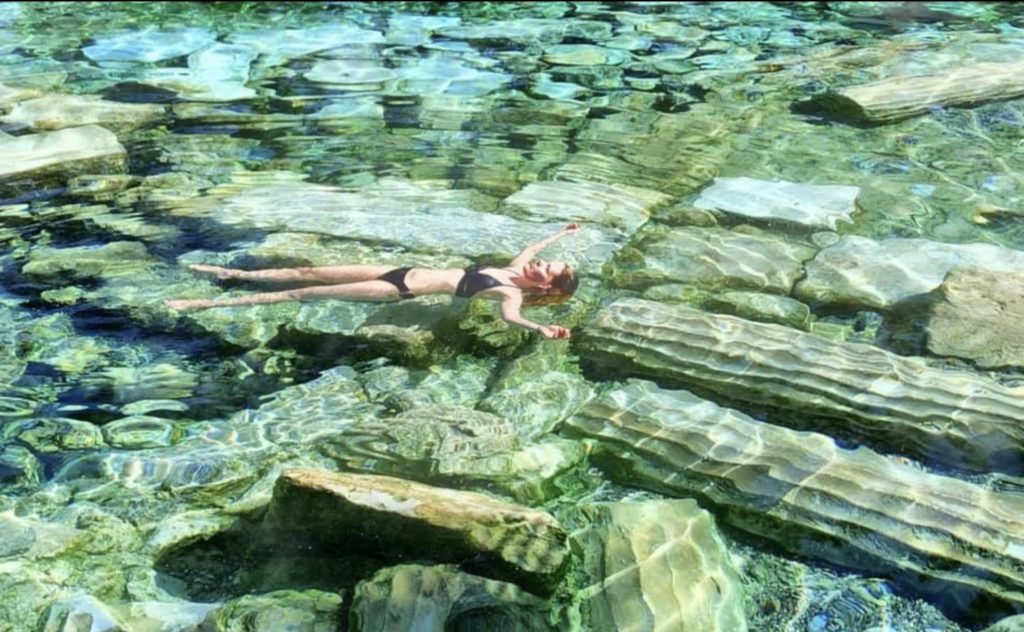
In what has to be one of our most epic hot spring soaks…Mandy feels like a queen floating over (real) ancient Roman ruins and columns in Cleopatra’s Pool. Its curative, steaming waters were allegedly a gift to Cleopatra from Marc Antony. It was once surmounted by a Roman Temple to Apollo with an ornate roof, which came tumbling down in a 7th century earthquake and now lies in ruins. Talk about intimately brushing fingers with the past…
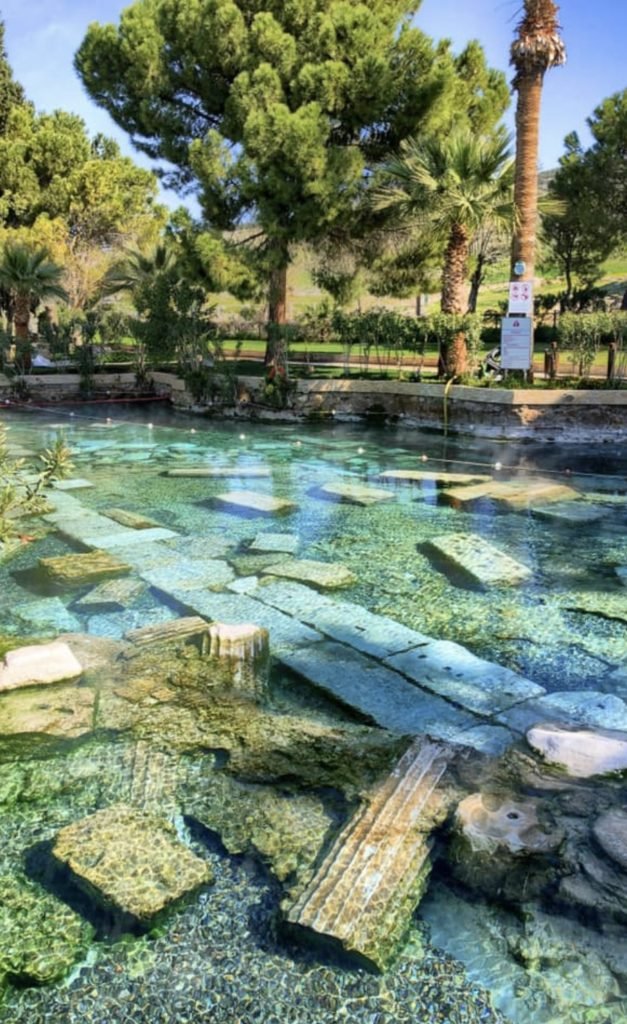
Getting to the hot spring baths early has its benefits. The before picture…

The after picture ?
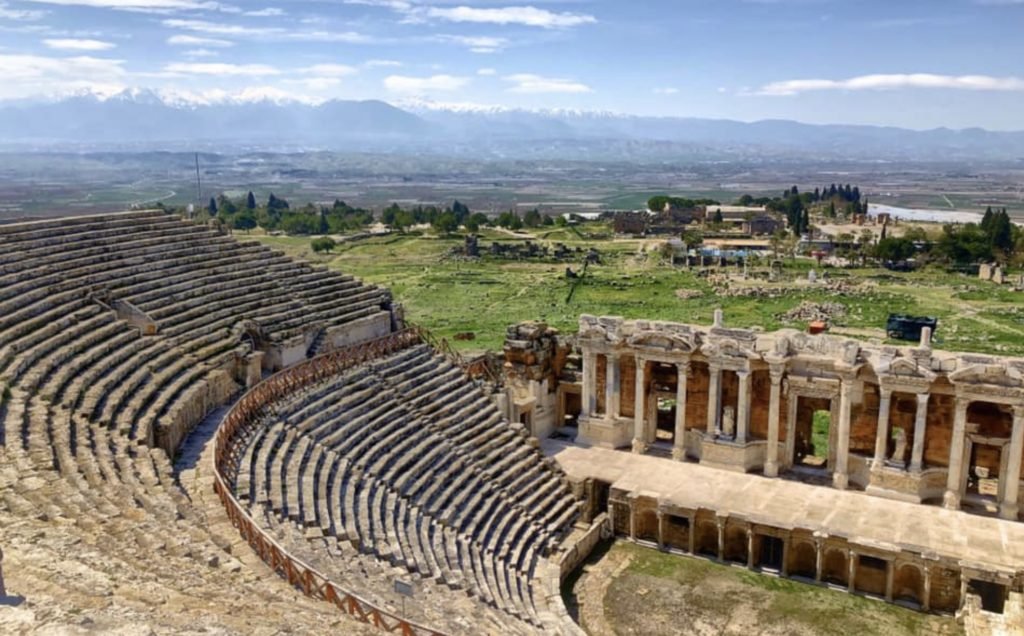
The theatre in the Hierapolis, an ancient Roman spa city founded in 190 BC, is part of of Pamukkale. It has one of the most intact stages we’ve seen.

At the bottom of Pamukkale hill, we met our first ever blue-eyed goose. We called him Jerry.
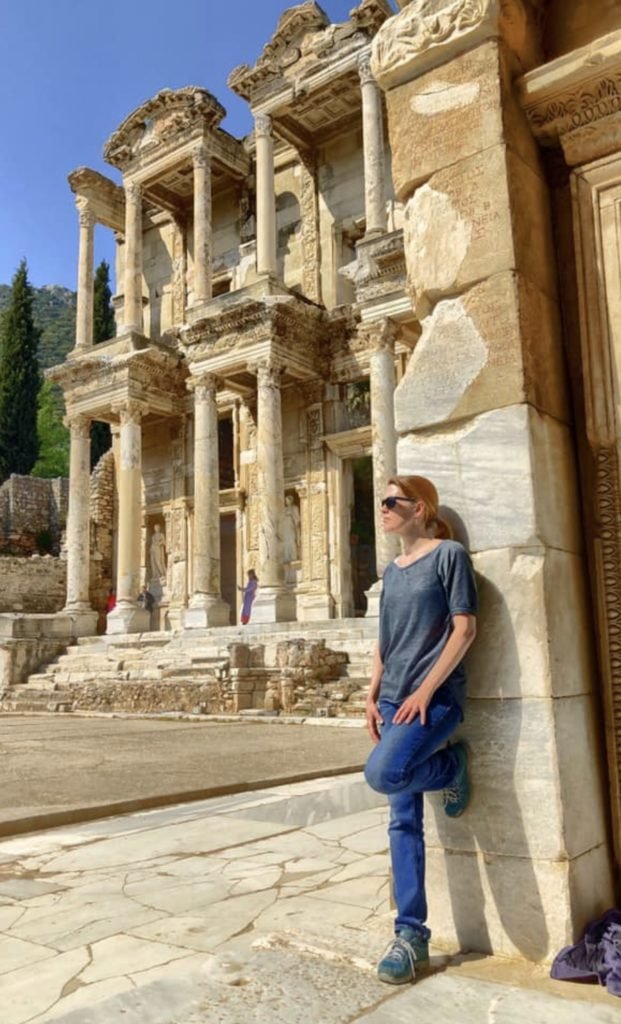
The ancient city of Ephesus, founded in 10th Century BC and flourished in 2nd Century AD as the world’s second biggest city after Rome at the time. It’s an extraordinary place where history seems to come alive. It’s easy to envision life happening here…where an astounding (250,000!) citizens lived, worshipped, shopped, exercised, watched live performances, went to visit the brothel(!), and even where they went to the loo! And what’s crazy?! 80% of Ephesus has yet to be unearthed. Mandy takes in the Library of Celsus, one of the most well preserved buildings which originally held 12,000 scrolls and was the third biggest library in the ancient world.

Another shot of the grandiose Library of Celsus. This laid in ruins until it was reerected by archeologists from 1970-1978.

From the inside looking up. What a incomprehensible feat of engineering for that time… how did they do this?!??

It’s really hard to show the soaring height of this marvel, it looked to be about four stories!
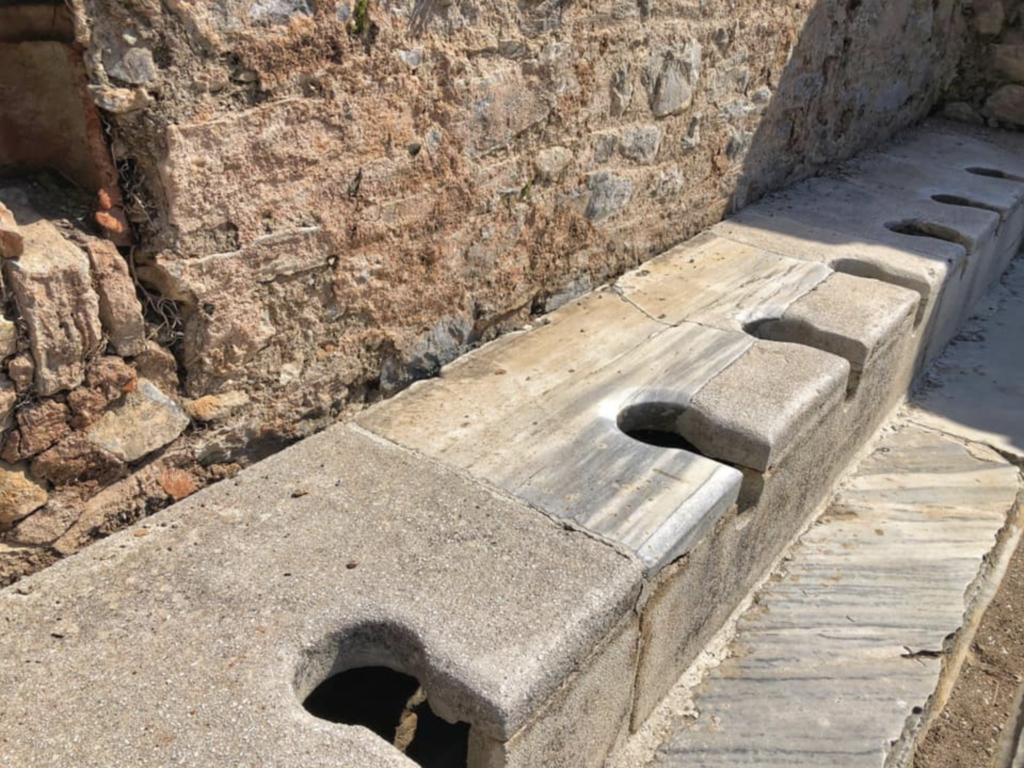
This is what a public toilet looked like in 1st Century AD. The ancient marble (!) latrines had a flow of water running underneath to dispose of the excretions. This public service was a “pay-as-you-go” available to, uh…men only. For as advanced as the Romans were these early capitalists surely did not realize they could make twice as much if the let women go-with-their-flow too? ?
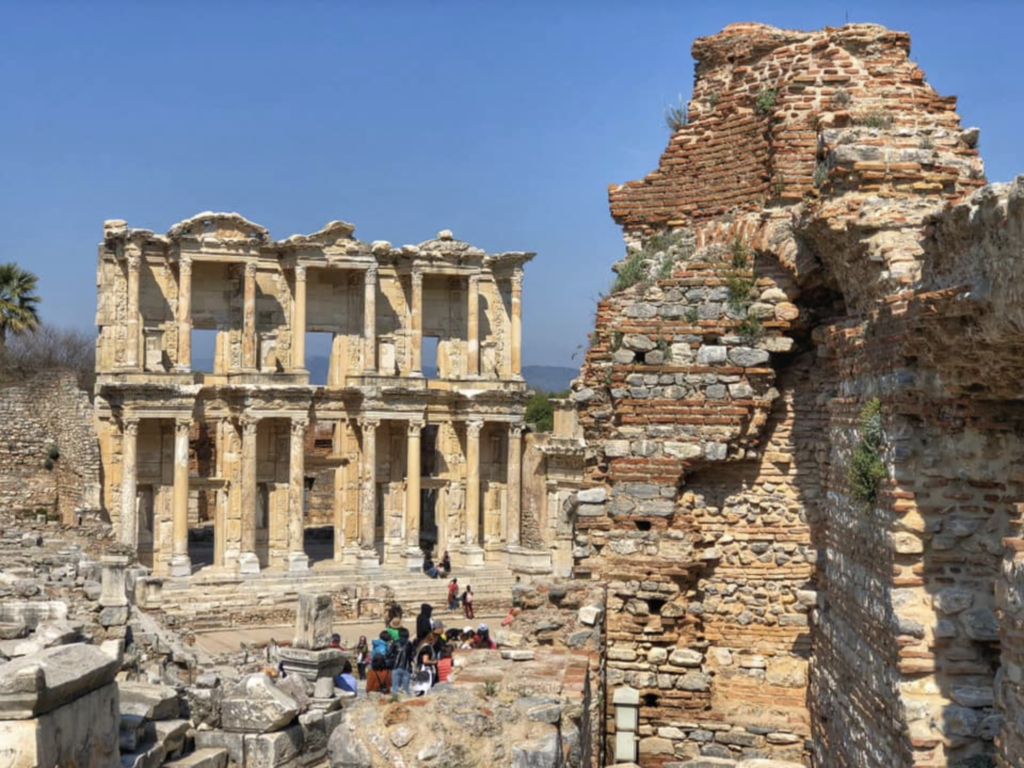
Another shot of the library. The Temple or Artemis is also nearby, which is nearly in complete ruins and also incidentally one of the ancient wonders of the world.
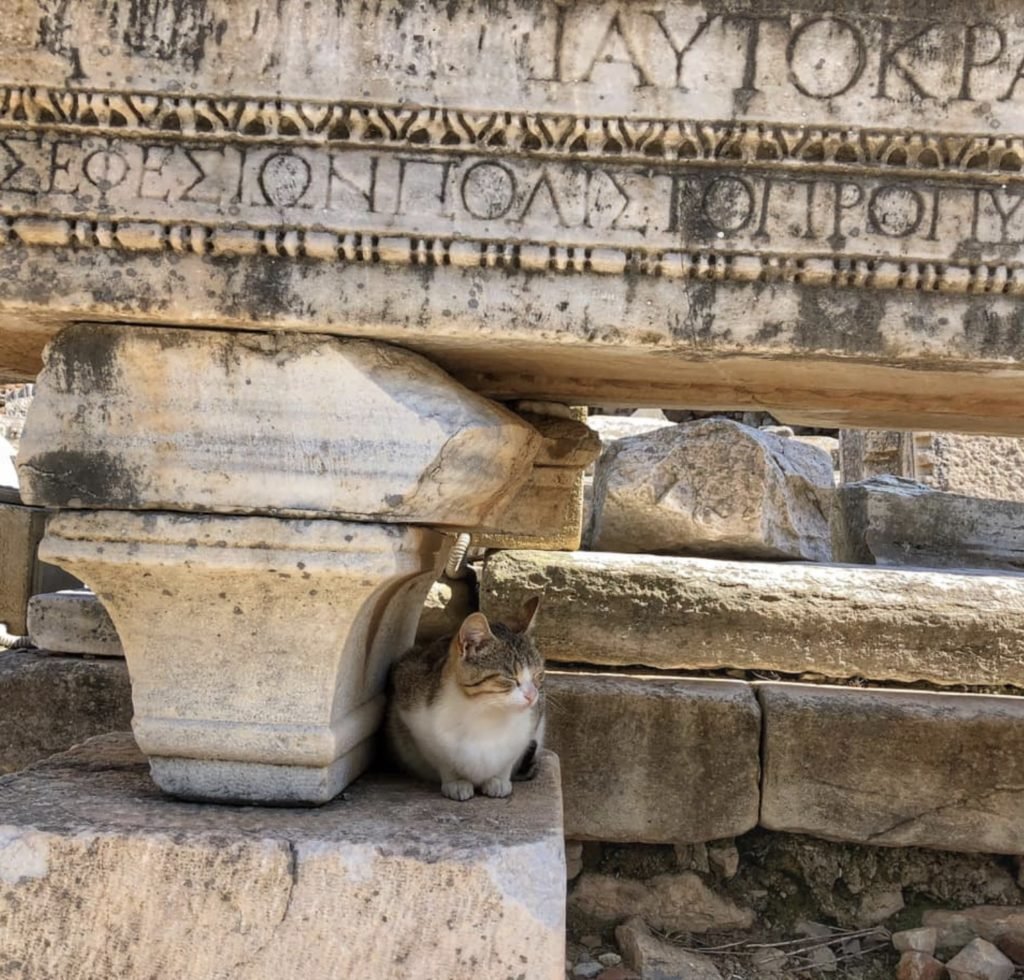
We bet a kitten 2000 years ago was doing the same thing!
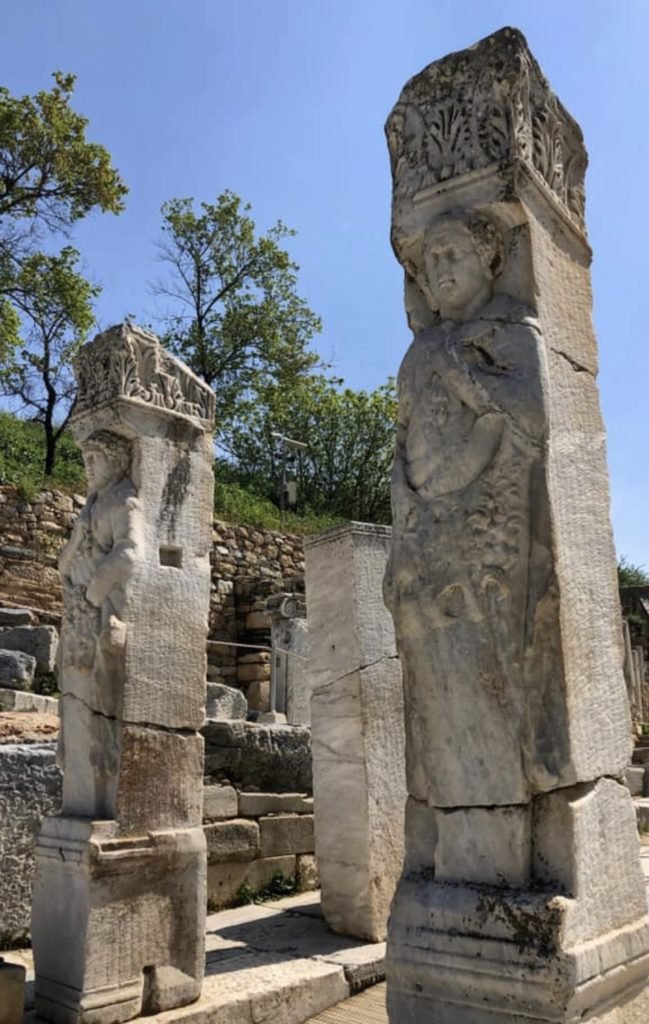
The Pillars of Hercules guard the entrance to a pedestrian only thoroughfare, and prohibit carts from entering… unbelievable they even had pedestrian only zones here!!
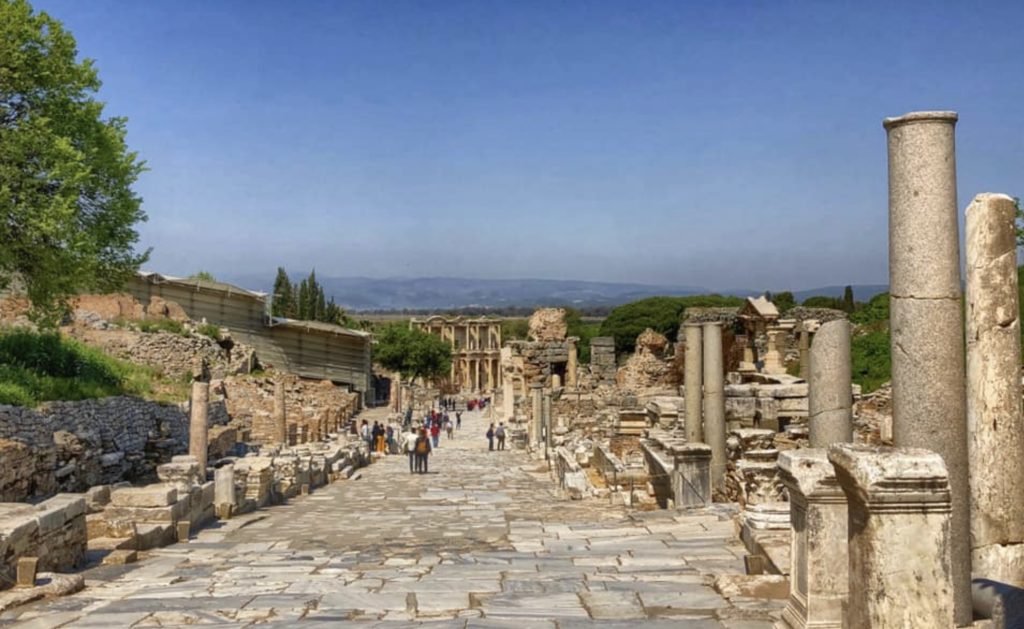
Main Street (completely made of marble cobbles!!) of Ephesus. Notable people who have walked down this street include: Virgin Mary who accompanied Paul the Apostle toward the end of her life (Paul lived here two years and wrote and named the Bible book Ephesians from this city), Julius Caesar (who visited in while chasing Pomey the Great), Cleopatra and Mark Antony (on a romantic rendezvous), Arsionoe (Cleopatra’s sister who fled there after losing the Egyptian throne and was later killed by Mark Antony), and Alexander the Great (who conquered the city and to help build the Temple of Artemis with his cash in exchange for his name carved to go on top…which was fortunately declined.)

The Temple of Hadrian, one of the most well preserved buildings in Ephesus.

Note Medusa on top of the second arch.
We’ll miss you Turkey! See you again in August when we return to fly out of Istanbul.




Amazing journey!! Fabulous pictures and narrative!!